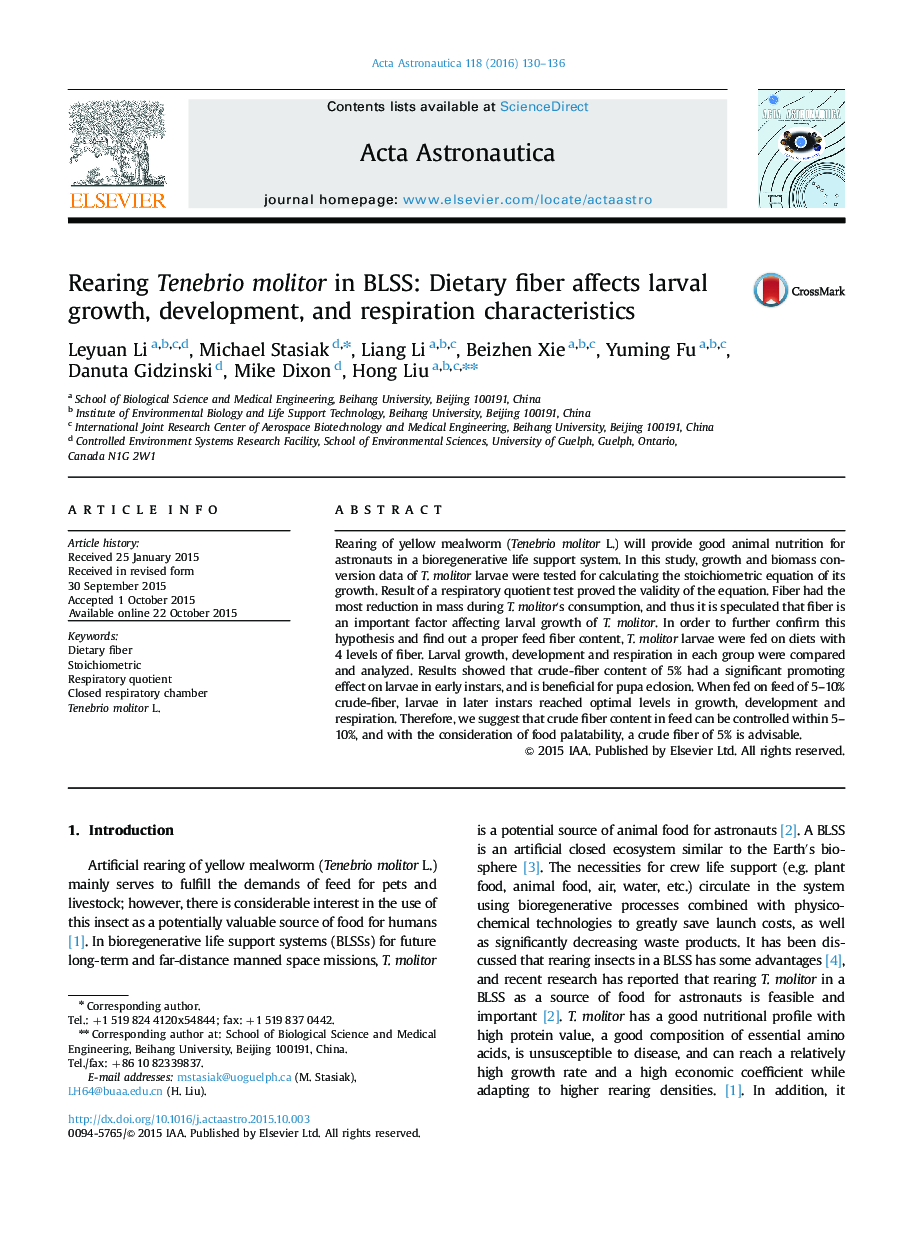| کد مقاله | کد نشریه | سال انتشار | مقاله انگلیسی | نسخه تمام متن |
|---|---|---|---|---|
| 1714253 | 1519936 | 2016 | 7 صفحه PDF | دانلود رایگان |
• We calculated a stiochoimetric equation of T. molitor larval growth.
• The stiochoimetric equation showed the importance of fiber content in feed.
• Fiber content in feed has significant effect on T. molitor larvae.
• We suggested an adequate range of dietary fiber for T. molitor larvae.
Rearing of yellow mealworm (Tenebrio molitor L.) will provide good animal nutrition for astronauts in a bioregenerative life support system. In this study, growth and biomass conversion data of T. molitor larvae were tested for calculating the stoichiometric equation of its growth. Result of a respiratory quotient test proved the validity of the equation. Fiber had the most reduction in mass during T. molitor′s consumption, and thus it is speculated that fiber is an important factor affecting larval growth of T. molitor. In order to further confirm this hypothesis and find out a proper feed fiber content, T. molitor larvae were fed on diets with 4 levels of fiber. Larval growth, development and respiration in each group were compared and analyzed. Results showed that crude-fiber content of 5% had a significant promoting effect on larvae in early instars, and is beneficial for pupa eclosion. When fed on feed of 5–10% crude-fiber, larvae in later instars reached optimal levels in growth, development and respiration. Therefore, we suggest that crude fiber content in feed can be controlled within 5–10%, and with the consideration of food palatability, a crude fiber of 5% is advisable.
Journal: Acta Astronautica - Volume 118, January–February 2016, Pages 130–136
